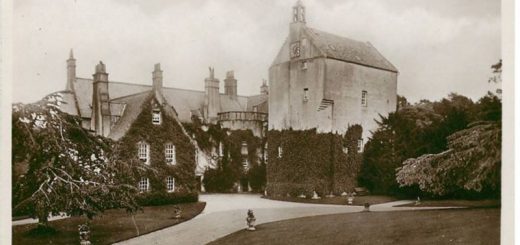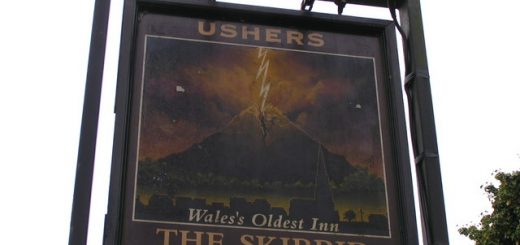Church of the Holy Cross, Ramsbury
There is a local tradition that the Church of the Holy Cross in Ramsbury is one of the locations haunted by the accused infanticide ‘Wild’ William Darrell of Littlecote House who died at Darrell’s Stile in a riding accident whilst hunting on 1 October 1589. He is also said to haunt the stile itself. If you count the studs in the door at midnight he is said to appear and open the door.
 According to ‘A History of the County of Wiltshire: Volume 12: Ramsbury and Selkley hundreds; the borough of Marlborough’ (1983) by D. A. Crowley (editor), A. P. Baggs, Jane Freeman and Janet H. Stevenson;’ The invocation of the church, called HOLY CROSS in 1405 and almost certainly in 1323, may have caused or resulted from the choice of the feasts of the Invention and Exaltation for the fairs at Ramsbury granted by the king in 1240. The church, of flint rubble with ashlar dressings, consists of a chancel, a north chapel, an aisled and clerestoried nave with a south porch, and a west tower. Apart from the cross shafts and tomb slabs, the oldest part of the present church is the long 13th-century chancel. By the later 13th century the nave had been aisled: the easternmost bay of each aisle was distinct from the others and each was possibly a transept extending further north or south than the true aisle. The west end of the church, including the two westernmost bays of each arcade and the aisle walls, was largely rebuilt in the 14th century, and the aisles were then widened to incorporate what may have been the transepts. The tower is also 14th-century. The chapel was built in the early 15th century, and in that century new windows were inserted in the chancel and at the east end of the south aisle. In the early 16th century the clerestory and a new nave roof of lower pitch were made. A west gallery was built in 1698–9 and aisle galleries in 1788 when the roofs of both aisles were remade. In an extensive restoration of 1890–3 the walls of the aisles were largely rebuilt and were given stepped buttresses and embattled parapets, a new lower pitched roof on the south aisle was made, the plain south porch was replaced by an elaborate porch in a late medieval style, a porch was added to the chancel, and the galleries were removed. The bowl of the font, of stone carved in the shape of a pineapple, was possibly an ornament on a gateway of Ramsbury Manor replaced c. 1775. The base was carved by Thomas Meyrick c. 1842.
According to ‘A History of the County of Wiltshire: Volume 12: Ramsbury and Selkley hundreds; the borough of Marlborough’ (1983) by D. A. Crowley (editor), A. P. Baggs, Jane Freeman and Janet H. Stevenson;’ The invocation of the church, called HOLY CROSS in 1405 and almost certainly in 1323, may have caused or resulted from the choice of the feasts of the Invention and Exaltation for the fairs at Ramsbury granted by the king in 1240. The church, of flint rubble with ashlar dressings, consists of a chancel, a north chapel, an aisled and clerestoried nave with a south porch, and a west tower. Apart from the cross shafts and tomb slabs, the oldest part of the present church is the long 13th-century chancel. By the later 13th century the nave had been aisled: the easternmost bay of each aisle was distinct from the others and each was possibly a transept extending further north or south than the true aisle. The west end of the church, including the two westernmost bays of each arcade and the aisle walls, was largely rebuilt in the 14th century, and the aisles were then widened to incorporate what may have been the transepts. The tower is also 14th-century. The chapel was built in the early 15th century, and in that century new windows were inserted in the chancel and at the east end of the south aisle. In the early 16th century the clerestory and a new nave roof of lower pitch were made. A west gallery was built in 1698–9 and aisle galleries in 1788 when the roofs of both aisles were remade. In an extensive restoration of 1890–3 the walls of the aisles were largely rebuilt and were given stepped buttresses and embattled parapets, a new lower pitched roof on the south aisle was made, the plain south porch was replaced by an elaborate porch in a late medieval style, a porch was added to the chancel, and the galleries were removed. The bowl of the font, of stone carved in the shape of a pineapple, was possibly an ornament on a gateway of Ramsbury Manor replaced c. 1775. The base was carved by Thomas Meyrick c. 1842.




Recent Comments